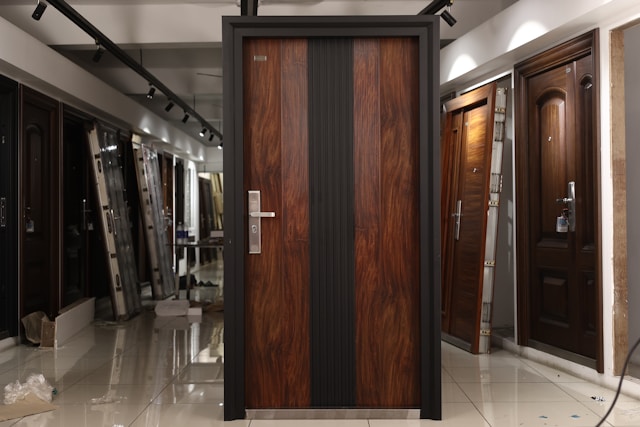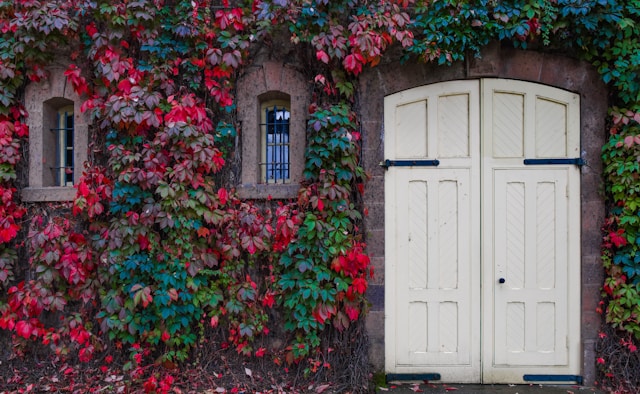Why You Should Invest in Custom Doors
Doors are more than just entryways; they are a reflection of your home’s style and personality. While standard doors may serve their basic function, custom doors offer far more in terms of design, functionality, and value. Whether you’re renovating your home or building from scratch, here’s why investing in custom doors is a decision you won’t regret.
1. Tailored to Your Home’s Design
One of the main advantages of custom doors is the ability to match them perfectly to your home’s architectural style and interior design. Standard doors come in limited designs, but custom doors can be created in virtually any style, whether you prefer sleek modern designs, rustic barn doors, or elegant French doors.
Benefit: With custom doors, you have the freedom to choose the material, finish, and detailing that complements your home, making every door a statement piece.
2. Perfect Fit for Unique Spaces
Homes come in all shapes and sizes, and not every door opening conforms to the standard dimensions of pre-made doors. Custom doors are made to fit the specific dimensions of your space, ensuring a seamless and snug fit. This eliminates the need for awkward adjustments or gaps, which can lead to drafts, inefficiency, or aesthetic issues.
Benefit: By having doors tailored to fit precisely, you avoid potential installation problems and ensure the best insulation and energy efficiency.
3. Superior Quality and Durability
Custom doors are often built with higher-quality materials and craftsmanship compared to mass-produced doors. When you invest in custom doors, you can select premium materials like solid wood, metal, or glass that are durable and long-lasting. Many custom door manufacturers also take pride in their attention to detail, producing doors that are not only beautiful but built to withstand years of use.
Benefit: Custom doors provide you with greater durability, reducing the need for repairs or replacements, making them a long-term investment in your home.
4. Enhanced Security
Security is one of the most important factors when choosing doors for your home. Custom doors offer more flexibility when it comes to adding advanced security features. Whether it’s reinforced materials, multi-point locking systems, or smart technology, you can ensure your custom door meets your exact security requirements.
Benefit: With a custom door, you don’t have to compromise on safety. You can choose designs that integrate both style and advanced security features for peace of mind.
5. Increased Home Value
Custom doors add more than aesthetic appeal to your home—they also increase its market value. Potential buyers often notice high-quality, unique features in a home, and custom doors can make a lasting impression. A beautifully crafted front door can enhance curb appeal, while unique interior doors can add charm and character throughout the house.
Benefit: Investing in custom doors can offer a high return on investment, boosting your home’s resale value and attracting potential buyers.
6. Eco-Friendly Options
If sustainability is important to you, custom doors offer an opportunity to choose environmentally friendly materials and production processes. You can select doors made from sustainably sourced wood, reclaimed materials, or those that incorporate energy-efficient designs like insulated cores. Additionally, many custom door manufacturers use low-VOC finishes and other green practices, helping to reduce the environmental impact.
Benefit: Custom doors can align with your eco-conscious values while reducing your home’s carbon footprint.
7. Personalized Touch
Custom doors allow you to add a personal touch that reflects your style and preferences. You can incorporate unique design elements like etched glass, custom carvings, or artistic hardware that wouldn’t be possible with standard doors. Whether you want a grand, statement-making entry door or a minimalist, sleek interior door, custom options let you bring your vision to life.
Benefit: Personalization makes your home truly yours. Every door can be a reflection of your personality and taste, creating a space that feels authentic and unique.
8. Unmatched Functionality
Custom doors aren’t just about aesthetics; they can also be designed to meet specific functional needs. For example, sliding doors for tight spaces, soundproof doors for home offices, or extra-wide doors for accessibility can be customized to suit your lifestyle. This level of functionality is hard to achieve with off-the-shelf options.
Benefit: Whether you need doors for convenience, privacy, or special requirements, custom doors can be tailored to provide exactly what you need.
Conclusion:
Investing in custom doors is about more than just improving your home’s appearance; it’s about adding value, security, and functionality while reflecting your personal style. From their superior quality and perfect fit to their ability to enhance curb appeal and increase home value, custom doors offer a range of benefits that make them worth the investment. If you’re looking to elevate your home, custom doors are a smart and stylish choice that will stand the test of time.


